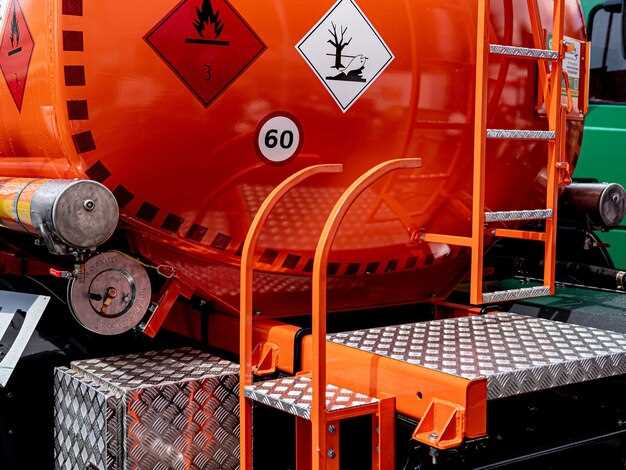
In the demanding environment of truck repair workplaces, ensuring safety is of paramount importance. With heavy machinery, tools, and high-stakes repairs, workers face various hazards that can lead to serious injuries if proper precautions are not taken. Adhering to established safety protocols is essential not only for compliance with regulations but also for fostering a culture of safety among employees.
The Occupational Safety and Health Administration (OSHA) provides clear guidelines and regulations aimed at minimizing risks in the workplace. These regulations guide truck repair facilities in implementing safety measures, maintaining equipment, and training employees to recognize and mitigate potential hazards. By understanding and enforcing OSHA standards, employers can significantly reduce the likelihood of accidents and create a safer working environment.
Developing comprehensive safety protocols involves assessing the unique risks associated with truck repair operations. This includes providing appropriate personal protective equipment (PPE), ensuring proper tool usage, and conducting regular safety training sessions. A proactive approach to safety not only protects workers but also enhances productivity and operational efficiency, ultimately leading to a more successful business.
Personal Protective Equipment Requirements in Truck Repair
In the context of truck repair workplaces, adhering to OSHA guidelines is essential to ensure the safety of all employees. Personal Protective Equipment (PPE) plays a crucial role in mitigating hazards associated with mechanical repairs, chemicals, and other risks present in the environment.
Key PPE requirements include:
1. Eye Protection: Safety glasses or goggles with side shields must be worn to protect against flying debris, chemicals, and hazards from power tools. The choice of eyewear should comply with ANSI Z87.1 standards.
2. Hearing Protection: Given the loud environment of truck repair shops, proper hearing protection such as earplugs or earmuffs is mandatory when noise levels exceed permissible limits, as outlined by OSHA.
3. Hand Protection: Workers should wear appropriate gloves made from materials suitable for specific tasks, protecting against cuts, abrasions, and chemical exposure. Different glove types are required for handling sharp tools versus working with oils and solvents.
4. Foot Protection: Safety boots with steel toes and puncture-resistant soles are required to protect against heavy loads and sharp objects. These boots should also provide adequate slip resistance to prevent falls.
5. Respiratory Protection: When working with harmful fumes or dust, appropriate respiratory gear, such as masks or respirators, should be used. The choice of respirator should be based on a hazard assessment in compliance with OSHA standards.
6. Protective Clothing: Employees should dress in durable and adequate clothing that guards against chemicals, heat, and sharp objects. This includes coveralls or shirts made from flame-resistant materials where applicable.
Ultimately, the effective use of PPE, combined with proper training and safety protocols, fosters a safer work environment in truck repair facilities. Employers must conduct regular assessments to ensure compliance with safety regulations and make necessary updates to their PPE requirements.
Proper Handling and Storage of Hazardous Materials in the Shop

Ensuring safety in a truck repair workplace involves meticulous handling and storage of hazardous materials. Proper protocols are essential to minimize risks associated with these substances, which can include chemicals, solvents, and fuel.
Firstly, it is vital to identify all hazardous materials present in the shop. Each substance should have clear labeling according to safety standards. This labeling should include information on the risks, handling instructions, and emergency measures recommended by the manufacturer.
When handling hazardous materials, employees must wear appropriate personal protective equipment (PPE), such as gloves, goggles, and respirators, as necessary. Training sessions on how to properly use and dispose of these materials must be conducted regularly to ensure all staff are aware of safe practices.
Storage of hazardous materials should be in designated areas that are well-ventilated and away from ignition sources. Containers must be securely closed when not in use, and flammable materials should be kept in fire-rated cabinets to reduce the risk of combustion.
Additionally, spills must be addressed immediately according to established protocols. Spill kits should be readily available, and all employees should be trained on their use. Emergency exits and equipment, such as showers and eye wash stations, should be easily accessible to all employees to ensure swift action in case of an incident.
Regular audits of hazardous materials storage areas should be conducted to ensure compliance with safety regulations and to identify any potential hazards. This proactive approach is crucial for maintaining a safe working environment in the shop.
OSHA Guidelines for Machine Safety in Truck Repair Facilities

Ensuring safety in truck repair facilities is crucial for protecting workers from potential hazards associated with heavy machinery. The Occupational Safety and Health Administration (OSHA) provides specific guidelines to enhance machine safety in such environments. Compliance with these standards is essential for maintaining a safe shop and minimizing the risk of accidents.
First and foremost, machine safety starts with proper training. Employees must receive adequate instruction on the safe operation of tools and equipment. This includes understanding the machine’s operational procedures, potential hazards, and emergency shut-down protocols. Regular refresher courses will reinforce safety practices and keep workers updated on changes in procedures or equipment.
Proper guarding of machines is another key aspect highlighted in OSHA guidelines. Safety guards should be installed on all machinery where moving parts pose a risk of injury. These guards should be maintained in good condition and should not be removed during operation. This serves as a primary defense against accidental contact with hazardous areas.
Additionally, the workplace must be equipped with appropriate Personal Protective Equipment (PPE). Employees should be provided with safety glasses, gloves, helmets, and other necessary gear specific to their tasks. Training on the correct usage of PPE is vital to ensure that workers understand their importance in protecting against injuries.
Regular maintenance and inspection of machinery are also mandated by OSHA. All equipment should be routinely checked for malfunctions or wear that could lead to unsafe operating conditions. A well-maintained machine not only enhances productivity but also significantly reduces the risk of accidents in the shop.
Lastly, fostering a culture of safety is essential in a truck repair facility. Management should encourage open communication regarding safety concerns and regularly solicit feedback from employees. Safety meetings can reinforce the importance of adhering to OSHA guidelines and allow the team to share best practices for maintaining a safe working environment.




